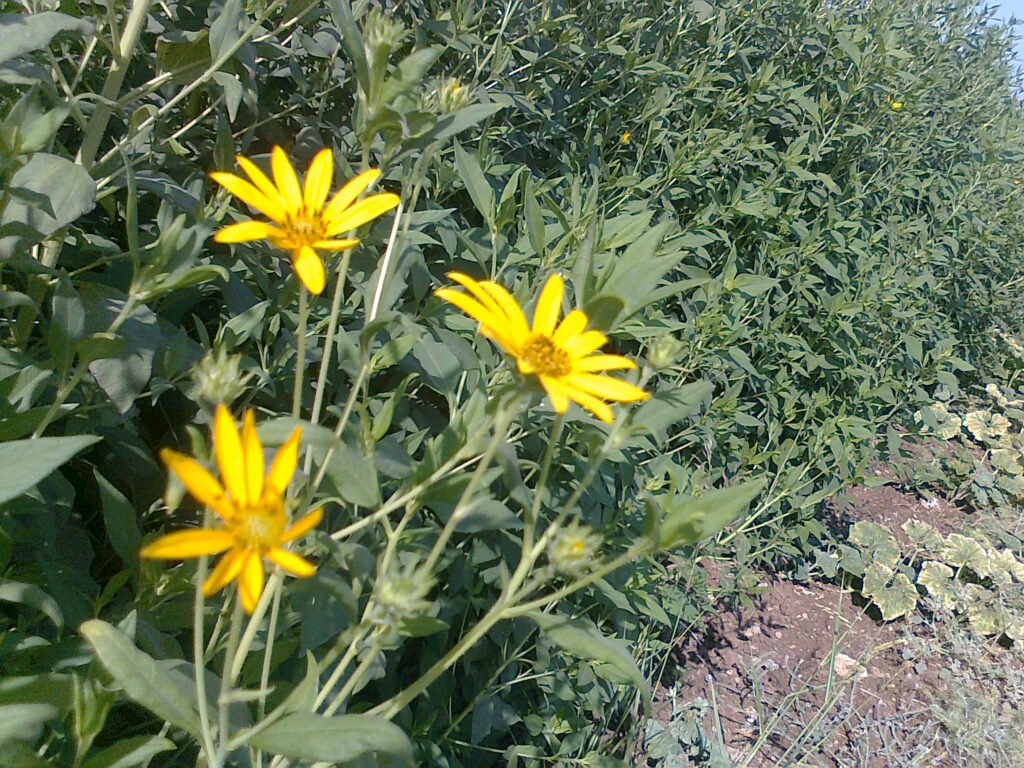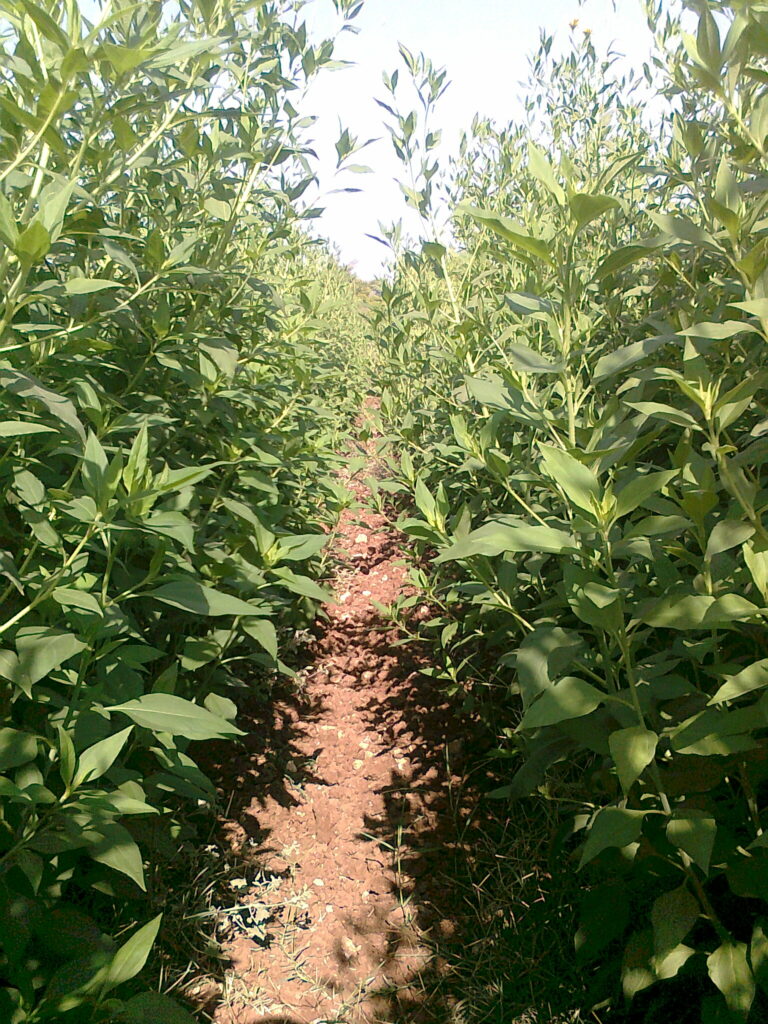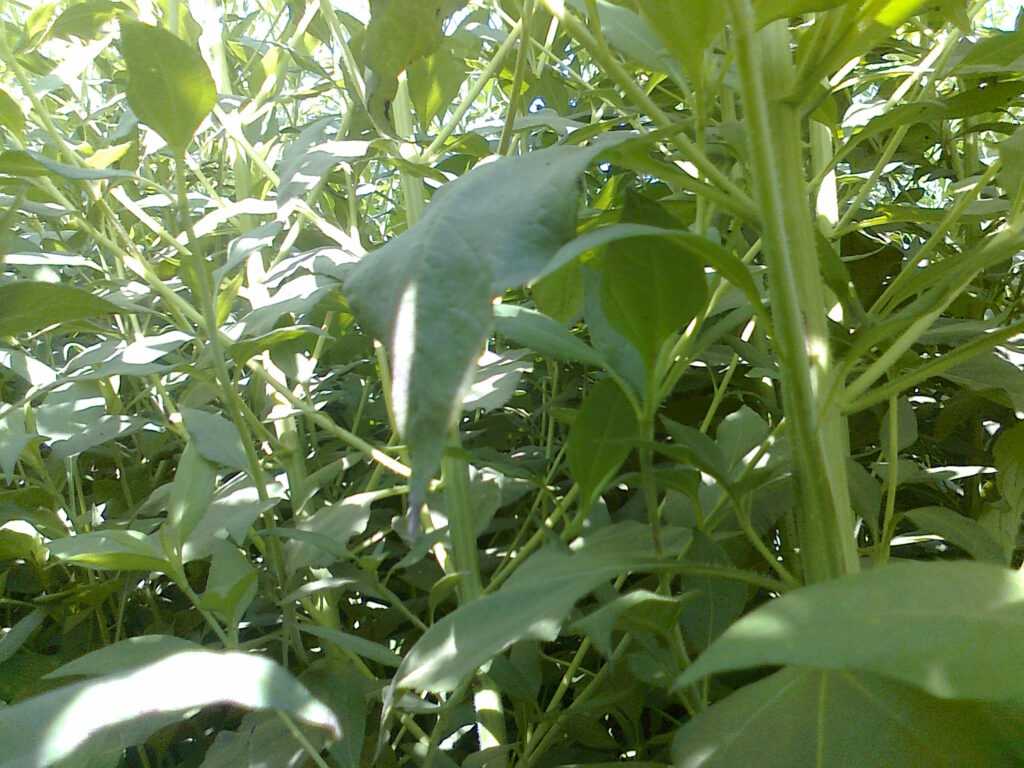When the sun went out
above me
I myself had
to become the sun.
It was difficult, but now
What comfort.
– Anna Świrszczyńska
Along with the renewal of the New Year, Chubeza’s boxes have also begun to be renewed with gratifying, delightful fall vegetables. We started to tell you about them, but several weeks later on October 7th, the Simchat Torah holiday, we all descended into shock, sorrow and pain from the force of the cruel blow that was dealt. The crops in the field did not stop growing, the vegetable boxes did not stop, but the words did not want to emerge. Now we are returning, one step at a time, to tell you once again about the vegetables in the box, to move forward once again in the ceaseless rhythm of the seasons. This week, we feature one of the first vegetables to arrive with the coming of autumn, after almost half a year of growing slowly under the ground – with sunflowers growing above.
It’s the sunroot, aka Helianthus tuberosus, or better yet the confusing moniker Jerusalem Artichoke.
Let’s begin with a clarification: Even though it looks like ginger, it is definitely not ginger!
We waited for theJerusalem artichoke over six months, till the bushes dried up and wilted. Only then could we chop those down and begin extracting the secret treasures buried beneath – delectable, satiating bulbs that enhance every soup, quiche, antipasti or salad. And you don’t need a lot — just a touch adds a phenomenal seasoning to any dish.
In America, they’re commonly known as “sunchokes,” but actually the title “sunroot” is an accurate description, for the Jerusalem artichoke is in fact a species of sunflower which develops an edible root bulb. The origins of this delectable bulb are in the North American East Coast from Georgia to Nova Scotia, where it has been growing both wild and cultivated in Native American vegetable gardens for years on end. The bulb fully enjoys the American sunshine and rich, fertile earth, yielding farmers and gleaners its rich roots abounding with energy and sweetness.
The Europeans, who came to visit and stayed to conquer, tasted the sunroot and loved it. First to describe the bulb was French explorer Samuel de Champlain, who noticed it in a Cape Cod vegetable garden in 1602. He sent some sunroots to France, from where they meandered to England, Germany and Italy in the 17th century. The Italians coined it girasole, Italian for “sunflower.” Somehow the pronunciation was distorted to “Jerusalem,” and it stuck. The “artichoke” part came from the fact that it somewhat resembles the artichoke in taste.
Like any sunflower, the sunroot adores the sun and thrives during the summer. For Chubeza, this is already a routine, timeworn habit to accompany its growth from spring, through summer until autumn. I say “watch,” because from the moment we placed the bulbs in the earth until we plunged the pitchfork in to extract them, we really did not have much to do (aside from watering and occasional weeding). We were rather amazed at the beautiful strength of its growth, at its ability to joyfully grow wild and dare the weeds to even think of coming close. Thankfully, in our field the Jerusalem artichoke is free of pests (moles and rats are their natural nemesis), which is why we could just step aside and simply watch it grow. Patiently.
Here it is going wild, blooming, growing. The Jerusalem artichoke in Chubeza:
And yes, it required much patience. The plant took its sweet time for at least seven months, growing, wilting and clandestinely swelling up its unique roots below. Only in mid-October when the foliage had dried up did we insert the pitchfork to examine the situation, just to discover that we needed more patience. So we waited a bit longer, and now, one month later, we are finally beginning to pull out all these very yummy, distinctive bulbs. Welcome!
Though it grows underground like the potato (even if it is more stubborn and recalcitrant than the spud) and has a similar caloric value, the Jerusalem artichoke is low in carbs. Instead of starch, it contains inulin, a fruit sucrose carbohydrate, soluble in water (which is how it stores its energy in the root bulb). Inulin aids in lowering blood sugar levels, thus recommended for diabetics (contrary to potatoes!). Inulin feeds the friendly microbes in the intestines and reduces the threat of a variety of diseases. (On the other hand, it can also cause gas. If you’re new to eating Jerusalem artichokes, start out gradually eating small amounts to let the body become accustomed.) These amazing bulbs are an excellent source of thiamine (B1), iron, niacin, Vitamin B3 and potassium. Chinese medicine classifies the Jerusalem artichoke as a warming vegetable which strengthens the digestive system. A great winter vegetable!
Tips:
- Jerusalem artichokes must be refrigerated, preferably in a closed plastic bag or sealed plastic container, to prevent them from growing soft.
- Conventionally, the Jerusalem artichoke is eaten peeled, which can be a tiresome task to prepare. But, you don’t actually have to peel off the skin. You can certainly scrape it off, and cook or bake it unpeeled. You may also steam the bulbs for several minutes to ease the peeling procedure.
- The Jerusalem artichoke turns black quickly after being peeled, so it is recommended to place it peeled in a bowl filled with water and a bit of lemon juice.
- And what about the veggie elephant in the newsletter? In this case, thegas issues (making this wonder bulb to be known in America as “fartichokes”). The gas is created from the breakdown of the inulin, the fruit sucrose mentioned above. So, if it makes you gassy, start by consuming small quantities. Two additional gas-reducers: cook the sunroots separately, drain, and then add to your dish; or cook/bake them seasoned with cumin which aids digestion and reduces gas.
Check our recipe section for a variety of ideas for cooking and serving the amazing sunroot, and feel free to add it to other familiar and favorite recipes in your own creative way. It truly enhances the flavor in nearly every dish. Bon appetite!
May this week bring b’sorot tovot
Alon, Bat-Ami, Dror, and the entire Chbubeza team
_________________
WHAT’S IN THIS WEEK’S BOXES?
Monday: Lettuce, Swiss chard/kale/spinach, baby radishes/daikon, beets, kohlrabi/fennel/turnips, sweet potatoes, parsley/coriander/dill, tomatoes, cucumbers/bell peppers, carrots.
Small boxes only: Scallions.
Large box, in addition: Slice of pumpkin/eggplants/corn/Jerusalem artichokes, cauliflower/cabbage/broccoli, arugula/tatsoi, long Thai lubia beans/short Iraqi lubia/yellow or green string beans.
FRUIT BOXES: Kiwi, apples/clementinas/grapefruit, avocados, pomegranites/bananas.
Wednesday: Lettuce, Swiss chard/kale/spinach, baby radishes/daikon, beets, kohlrabi/fennel/turnips, sweet potatoes, parsley/coriander, tomatoes, cucumbers/bell peppers, carrots.
Small boxes only: Scallions.
Large box, in addition: Slice of pumpkin/eggplants/corn/Jerusalem artichokes, cabbage/broccoli, arugula/tatsoi, long Thai lubia beans/short Iraqi lubia/yellow or green string beans.
FRUIT BOXES: Kiwi, apples/clementinas/grapefruit, avocados, pomegranites/bananas.




